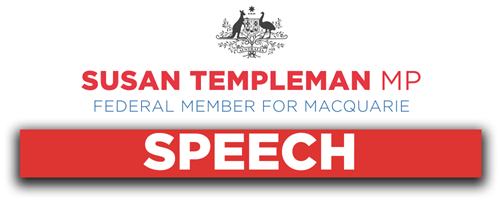
I move:
That this House:
(1) notes that under the Government's child care subsidy system:
(a) fees and out of pocket costs are out of control, with the Department of Education predicting that fees will increase by 5.3 per cent in 2020-21;
(b) fees have increased by more than 35 per cent since the election of the Government in 2013;
(c) Australian families contribute 37 per cent of early education and child care costs, compared to the OECD average of 18 per cent;
(d) there is an annual subsidy cap which is a significant barrier to work for many families; and
(e) secondary income earners earn very little take home pay if they go back to work full time;
(2) further notes that recent reports by the Grattan Institute, KPMG, and PwC have found that increased investment in early education and child care would boost Australia's gross domestic product by between $4 billion and $11 billion through increased workforce participation; and
(3) calls on the Government to fix its broken child care subsidy system that has failed to keep a lid on costs and has failed to support working parents, particularly women, to work full time or increase their hours.
Right now there are thousands of parents who can see the end in sight. Their child is at the end of her early preschool education, whether that's family day care, long day care, whatever form it takes. That child's about to head off to big school. The relief in sight? Well it's not that there won't be logistical challenges and maybe before- or after-school care or holiday care, but finally there will be relief from the relentlessness of high child-care fees. These are especially felt at the end of the year because so many families have reached their cap and don't get the financial support they get earlier in the year because somehow it's easier to find money in the lead-up to Christmas. Sure!
These parents don't know it yet, but the cost of before- and after-school care and holiday care is going to be a similar drain. That's a reality that we on the Labor side recognise. Parents are spending a lot of their family budget on child care. I have had many conversations with them about it, and also with grandparents, who are all too aware that the day or two a week they do minding the grandkids makes a huge difference to their family's budget. Parents and grandparents can see the merit of our plan, that is to scrap the subsidy cap, which often leads to families losing money from an extra day's work, lifting the maximum child-care subsidy rate to 90 per cent, and increasing the child-care subsidy to every family earning less than $530,000 a year.
I have also had conversations with people who aren't currently affected by the ever-rising child care costs. I think it's important that we all understand the situation families are facing, because it affects all of us. The current child-care system isn't designed to get everyone back to work. Many parents across all incomes want to go back to work or do more hours but find it isn't worth it because they don't take home enough pay. Many parents lose money when they work that fourth or fifth day, because the subsidy rate is based on the family income. So much for 'If you have a go you get a go.' In child care you don't: you get to go backwards. The proof that child care is too expensive for many families is in the numbers. Only 15 per cent of three-year-olds in Australia attend early learning compared to an average of 69 per cent in other developed countries.
Underpinning our policy on this side of the House is the belief that quality early learning is important for children's development, because we know the brain development that occurs in those early years. On average, Aussie families who are sending their kids to child care pay between 30 and 40 per cent of the household income. The OECD average is just 11 per cent. We are right at the top. Our families are bearing a higher proportion of cost than many other places.
Under Labor's policy more than a million families will be better off, and the greater support also applies to before- and after-school care and holiday care. As an example, a family with an income of $150,000 would be somewhere between $3,000 and $5,300 a year better off under our changes. I say to families, go to our child-care calculator and find out the savings your family would receive from our child-care subsidy reform. It's childcarecalculator.com.au and I'm going to post the link in the comments on Facebook below this speech. It will show you exactly the difference that we can make in your household budget and to your lives.
Let's be clear, while I can feel the relief of parents, this is not a welfare measure. This is about getting people back to work and into work. Cheaper child care is good for the economy, it's good for families and it's good for women. I would add that it's especially good for the kids.
Economists have modelled how much the economy grows with more investment in quality child care. KPMG estimated that child-care reform could generate between 160,000 and 210,000 working days a week, the equivalent of 30,000 to 40,000 full-time jobs. The Grattan Institute research concluded that women with young children will increase their hours of paid work by 13 per cent if the system is reformed to make child care cheaper, and those reports estimate that the consequence could be GDP growth of between $4 billion and $11 billion a year. That's a big kick in the right direction for the economy.
It's fundamental economic reform,


